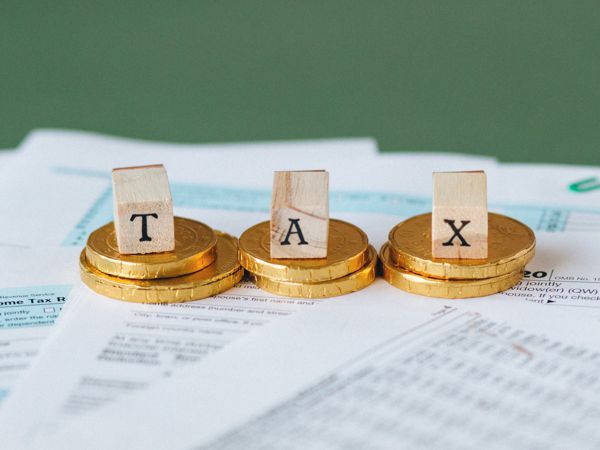Machinery Buyers Guide For Bonus Depreciation Tax Savings In 2021

Uncle Sam Wants To Help Buyers Of New & Used Machinery
Machinery plays a vital role in our economy, enabling the production of food, construction of infrastructure, and efficient movement of materials. Whether it's for farming, manufacturing, or transportation, machinery is the backbone of productivity. That’s why the U.S. government encourages investment in this sector through various tax incentives.
Congress recognizes that investing in capital goods like machinery and research and development is essential for long-term economic growth. As a result, these investments are often given special tax treatment to encourage business expansion and innovation.
One such incentive is bonus depreciation, which allows businesses to deduct a large portion of the cost of new or used machinery in the year it's purchased. This helps reduce taxable income and provides immediate financial relief.
What Types Of Purchases Qualify For Bonus Depreciation?
According to current IRS guidelines, bonus depreciation applies to tangible personal property with a recovery period of 20 years or less. This includes a wide range of heavy machinery such as tractors, excavators, cranes, forklifts, and more. Most of these items qualify for full bonus depreciation.
Used machinery can also qualify, provided it was not previously owned by the buyer. This rule changed in 2017, when the law was updated to allow used equipment to be eligible for bonus depreciation. However, real estate improvements and land purchases do not qualify.
There are also specific rules for vehicles. While most machinery qualifies, cars and trucks have limitations. Additionally, farm equipment has its own set of rules. For example, the recovery period for farm machinery was reduced from seven to five years under recent tax reforms.
How Is Bonus Depreciation Calculated?
Depreciation is a way to spread the cost of an asset over its useful life. Businesses typically use two types of depreciation: book depreciation (for financial reporting) and tax depreciation (for tax purposes). Tax depreciation often allows for accelerated deductions, such as bonus depreciation.
In 2021, the bonus depreciation rate was 100% for qualifying assets. This means you can deduct the entire cost of the asset in the year it's purchased. However, if you also use Section 179, you may want to apply that first before applying bonus depreciation to the remaining balance.
It's important to note that once you elect to take bonus depreciation, you must apply it to all similar assets purchased in the same year. You cannot choose to apply it to one but not another.
What Is Bonus Depreciation In 2021?
As of 2021, the bonus depreciation rate is 100%, meaning you can deduct the full value of qualifying machinery in the year it's purchased. This rate is scheduled to decrease in future years, but Congress often revises tax laws, so it's possible the high rate could continue.
Here’s a breakdown of the bonus depreciation schedule:
| Year |
Bonus Depreciation
Deduction |
| 2017 | 100% |
| 2018 | 100% |
| 2019 | 100% |
| 2020 | 100% |
| 2021 | 100% |
| 2022 | 100% |
| 2023 | 100% |
| 2024 | 80% |
| 2025 | 60% |
| 2026 | 40% |
| 2027 | 20% |
| 2028+ | 0% |
Examples Of Bonus Depreciation For New & Used Machinery Purchases
Example 1: You buy a used mini excavator for $25,000. Since it wasn’t previously owned by you and is used for business, you can deduct the full amount in the year of purchase.
Example 2: A new attachment for your machine costing $3,000 also qualifies for full bonus depreciation.
Example 3: If you buy a tractor for $1,200 but use it mostly for personal use, it doesn't qualify for bonus depreciation.
Example 4: If you use Section 179 to deduct the full cost of a machine, you cannot also claim bonus depreciation on the same asset.
Example 5: If you choose not to apply bonus depreciation to one truck, you must apply it to all similar assets purchased in the same year.
How Does Bonus Depreciation Work With Section 179?
Section 179 and bonus depreciation both help reduce taxable income, but they work differently. Section 179 allows you to deduct the full cost of qualifying assets as an expense, rather than depreciating them over time. This can be especially beneficial for small and medium-sized businesses.
Bonus depreciation, on the other hand, allows you to deduct a percentage of the asset’s cost in the year it's purchased. In 2021, the rate was 100%, making it very attractive for businesses looking to maximize deductions.
The key difference is that Section 179 is limited to a certain dollar amount ($1.05 million in 2021), while bonus depreciation has no limit. Also, Section 179 offers more flexibility in how you apply the deduction, while bonus depreciation requires you to apply it to all similar assets.
Many businesses choose to use both Section 179 and bonus depreciation together. A common strategy is to apply the full Section 179 deduction first, then apply bonus depreciation to the remaining balance.
Important Note
This blog post is intended to provide general information about bonus depreciation and how it applies to machinery purchases. It is not intended as tax advice. Always consult a qualified tax professional for guidance tailored to your specific situation.
Tax laws and interpretations change over time, so it's important to stay informed and seek expert advice to ensure compliance and optimize your benefits.
Resources
IRS Form 4562 for depreciation
How a business owner got a free truck
Find Similar Articles By Topic
#agriculture #transportation #material handling #construction #taxes
Fabric Care Systems,Wrinkle Removal Solutions,Garment Refresh Appliances
YIWU ACKILISS ELECTRIC CO..LTD , https://www.ackiliss.com